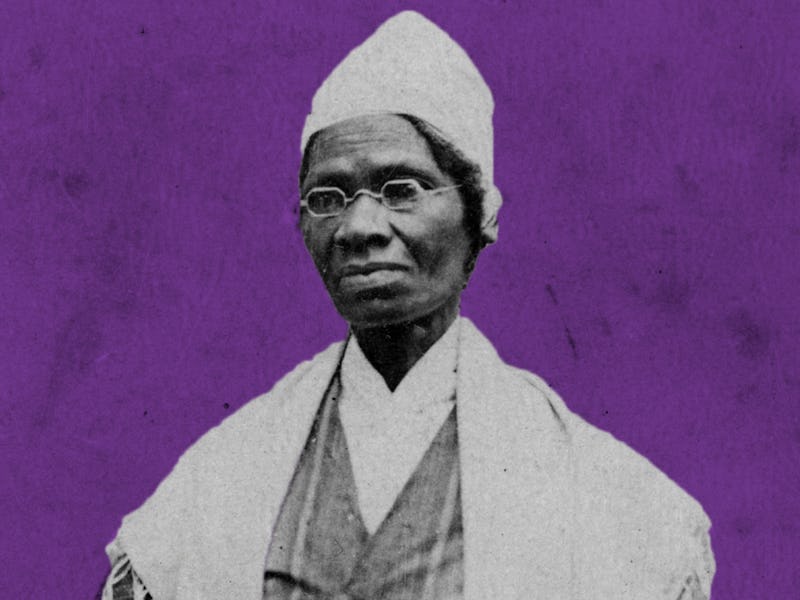Sojourner Truth: 3 Pivotal Moments That Define Her Fearless Life
Just three from her life of tumultuous change and progress.

The life of Sojourner Truth was a fearless one. When she died in 1883, at the age of 86, she had experienced a number of pivotal moments, the sum of which had made her life not just exceptional, but one of historical significance.
Google honored Truth’s life on Friday, the first day of Black History Month in the United States, with a Google Doodle by the prolific, talented, and ascendant artist Loveis Wise. You’ve seen her work in ads for REI, frequently used as art elements in The New Yorker, New York Times, BuzzFeed, and NPR, and she’s illustrated for TED and Cartoon Network.
Here are three historic moments in Truth’s life:
The Google Doodle for February 1, 2019, honoring the life of Sojourner Truth.
3. Truth Is the First Black Person to Win a Court Case Against a White Person
The Google Doodle shows one such pivotal, historic moment in the life of Truth: her outside the courthouse where she successfully sued for the freedom of her son Peter, age 5, who had been illegally sold into slavery, a judge ruled. In this instance, in 1828, she became the first black person to win a legal case against a white person. Later, in 1835, she won another case she brought against a white couple, successfully arguing they slandered her.
In the mid-19th century, Sojourner Truth became a nationally known advocate for justice and equality between races and between men and women. She is honored in American history for 'Narrative of Sojourner Truth: A Northern Slave' (1850), for innumerable speeches against slavery and for women’s rights, for her work on behalf of freedmen after the Civil War, and for her ability to keep audiences enthralled through singing and eloquent speeches.
2. From Baumfree to Truth
Born Isabella “Belle” Baumfree in or around 1797, she was a slave in upstate New York’s Ulster County, along the Hudson River. By 1843, her life had seen a number of tumultuous turns for good (she bore five children as an adult) and awful reasons (she was sold several times to different slave owners as a young woman). But on June 1 of 1843, she took on the name by which she would be known to history: Sojourner Truth. It was she who became a member of the Methodist movement within the Protestant denomination of Christianity.
1. Truth Makes a Speech That Goes Down in History
“Ain’t I a Woman?” — the exact transcript of which has never been available — is a speech whose main theme of inclusion and women’s rights has become timeless. She gave the speech on May 29, 1851, during the Women’s Rights Convention in Akron, Ohio. It is stirring, brief, and packed with meaning. While “And ain’t I a woman?” is spoken four times in the speech, a later line should also stay with the reader in 2019:
Then that little man in black there, he says women can’t have as much rights as men, ‘cause Christ wasn’t a woman! Where did your Christ come from? Where did your Christ come from? From God and a woman! Man had nothing to do with Him.
In 2013, US Representative Gwen Moore of Wisconsin invoked Truth’s speech remarked on the House floor, after the passage of the Violence Against Women Act: “I pray that this body will do as the Senate has done and come together as one to protect all women from violence,” Moore said. “As I think about the LGBT victims who are not here, the native women who are not here, the immigrants who aren’t in this bill, I would say, as Sojourner Truth would say, ‘Ain’t they women?’”